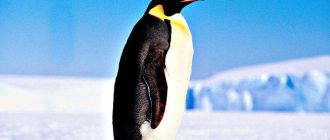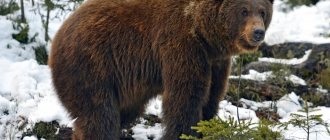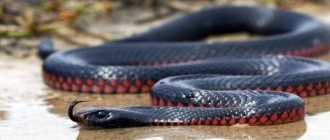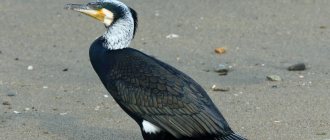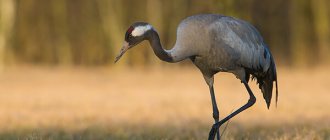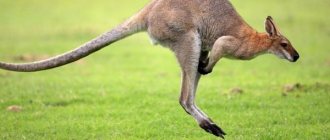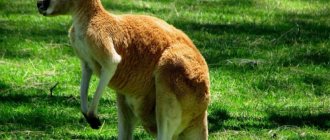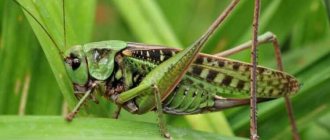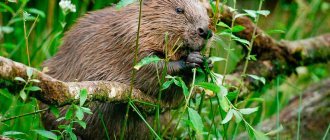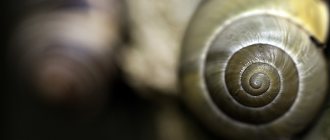The penguin is a rather unusual animal. This is a bird that cannot fly. There are several versions by which they got their name.
The first is the Welsh words pen and gwyn, which mean "white head". However, this expression was used in relation to the great auk, which is now an extinct species. It was probably transferred to them due to their external similarity.
The second possible origin of the name is the word pingwing “hairpin wing”. Another version is the Latin word pinguis, which means “thick.”
There are about 20 species of penguins
Penguins have their own family, Spheniscidae. They are most closely related to petrels and albatrosses. There is still debate about the number of individual species, but it is generally accepted that there are between 17 and 19 species. Species are divided into six genera: crested, spectacled, Antarctic, imperial, yellow-eyed and small.
What they all have in common is a lovely tuxedo. The black and white coloration helps camouflage the birds from potential predators. When viewed from below, the white belly blends better with the light surface waters, while from above, the black back resembles the dark hues of the deep ocean.
1) “Alien teeth” of hagfishes
There are legends about the gluttony of these creatures. Animals often eat fish caught in nets, therefore causing a lot of harm to fishing. Resembling a huge worm, the hagfish has an impressive jaw with an interesting arrangement of sharp teeth arranged in several rows.
Ironically, despite having such a menacing jaw, the hagfish does not need to use it to stay full. She knows how to “feed” on the skin, no matter how strange it sounds. The hagfish swims in rotten water next to the decaying corpses of living creatures, absorbing their wonderful corpse juices through the pores on the skin.
Sailors met birds wearing tuxedos for the first time in the South Seas
The term "penguin" comes from either the Welsh "pen" and "gwyn", meaning "white head", or from the Spanish "pingüino", meaning "excessive amount of fat". The first bird to receive this name was the now extinct great auk. This black and white flightless bird lived in the North Atlantic Ocean. However, the great auk turned out to be in no way related to modern penguins; it belonged to the auk family. In the 1800s, fishermen and whalers slaughtered them by the thousands, and by 1844 the species was extinct.
Great auk, Photo: Klaus Rudloff
At the beginning of the 20th century, researchers discovered tuxedoed birds in the southern seas and considered them a living link between birds and dinosaurs. This belief was the impetus for the famous “worst voyage in the world,” a scientific expedition led by Dr. Edward Wilson in 1911 to recover emperor penguin eggs for embryonic studies. At that time, it was still believed that the early stages of development directly reflected the developmental attributes of the ancestors; in the case of penguins, reptilian scales in the embryo could indicate the birds' descent from dinosaurs. This connection has since been debunked, although it is now accepted that all birds are descended from dinosaurs.
Penguins appeared after the extinction of dinosaurs
The first penguins appeared about 60 million years ago in temperate latitudes, around 50 degrees south latitude, near what is now New Zealand. The area, devoid of ground-based predators, was suitable for flightless birds to survive. While many birds nest in trees or cliffs to protect their chicks from wild mammals, penguins historically could only nest on the ground.
The earliest known penguins evolved shortly after the mass extinction of dinosaurs during the Cretaceous and Tertiary periods. Two species of Waimanu penguins are currently considered the earliest common ancestors of all penguins. Flightless like modern penguins, Waimanu had anatomical similarities to flying birds and may have had swimming abilities.
Photo: Chris Gaskin
Their beaks were long and thin, and their legs were slightly larger than those of modern penguins. The discovery of these ancient species was based on the analysis of four separate specimens from North Canterbury, New Zealand, which are among the best-preserved bird fossils of the era. It was these samples that served as evidence for the theory that penguins diverged from other birds before the end of the Cretaceous era.
At that time there were almost 40 species, that is, twice as many as today. The size of the birds also exceeded their contemporaries. The largest of the giant penguins, Palaeeudyptes klekowskii, measured 2 meters from the tip of its beak to the tip of its toes. For comparison, the current emperor penguin is 134 cm tall. To the north lived the Peruvian giant Icadyptes salasi, but it was only 150 cm tall. This giant had a unique 18 cm beak, which is believed to have been useful in piercing fish.
Around 23 million years ago, in the early Miocene, most giant penguins went extinct, with only Anthropodyptes gilli thriving in Australia for another 5 million years. After the extinction of the giant species, the chinstrap penguins became dominant, from which the crested species, the ancestors of all modern penguins, evolved.
Natural habitats
The ancestors of modern penguins once inhabited areas with a temperate climate, since Antarctica was not the Antarctica it is today. Changes in climatic conditions gradually occurred, which led to changes in the natural habitats of many animals. When Antarctica moved closer to the South Pole, a massive migration of animals occurred, but penguins were able to adapt to such harsh conditions in Antarctica.
The natural habitats of penguins are the waters of the southern hemisphere, as well as the coastal waters of Antarctica and New Zealand, the southern regions of Australia and South Africa, as well as the coasts of South America and the Galapagos Islands.
Interesting moment! The warmest habitats of modern penguins are located on the Galapagos Islands, which are located on the equator.
Penguins are mostly cold-loving animals, so the main condition for their habitat in the equatorial zone is the presence of a cold current. The habitat of all modern penguin species is limited to 45-60 degrees south latitude, so the largest populations of penguins are concentrated within Antarctica and its adjacent islands.
Only two species of penguins live permanently in Antarctica
Contrary to popular belief, only five species of penguins have ever set foot on the icy shores of the Antarctic continent, and only two, the emperor penguin and the Adélie penguin, live there exclusively. In fact, penguins live in a wide variety of environments. The Humboldt penguin lives on the shores of Chile's Atacama Desert, the driest desert in the world, where summer temperatures can reach 21°C. Yellow-eyed penguins from Enderby Island, off the coast of New Zealand, hide under the trees of a dwarf forest. Each species of penguin has unique adaptations for living in its home environment.
Penguins are fast swimmers and deep sea divers
Photo: Atlas Kadrow
Penguins are ocean birds that spend up to 75% of their lives in the water. Swimming is what they do best. Their torpedo-shaped bodies, combined with powerful flippers, allow them to dive to considerable depths and swim long distances. Some penguins, like Fiordland and Rockhopper, have even been found to have barnacles growing in their feathers!
Their legs and feet, positioned far behind the body, promote hobbling on land, but underwater they act as streamlined rudders that minimize drag. On the surface of the water, a penguin can at best paddle like a duck, but underwater they swim at speeds exceeding Olympic records. The fastest, the emperor penguin, can reach speeds of up to 14 km/h, but prefers a stable speed of 11 km/h. Most medium-sized individuals swim at a speed of 8 km/h, while the smallest penguin moves at a speed of 1.5 km/h.
The penguin usually stays within 1-2 meters of the water's surface, often using a swimming technique called dolphining. Shallow gliding through the water using a series of successive jumps also serves as a defense mechanism against predators: it is difficult for them to capture swimming penguins, which constantly disappear above the surface of the water.
On average, penguins dive to depths of 9 to 18 meters. Smaller species tend to feed at the surface of the water, but larger individuals such as king penguins often dive to depths of up to 91 meters, and emperor penguins can reach depths of 518 meters. The emperor penguin can also remain underwater for more than 32 minutes, the longest recorded avian dive to date.
general characteristics
Penguins have a streamlined body shape, due to which they easily move through the water.
This is facilitated by developed muscles, a special structure of bones and the presence of wings. Fast and powerful wing work helps birds achieve high speeds of movement even in the water column. Unlike birds that can fly, penguins have developed muscles, as well as a pronounced sternum with a keel. Their bones in the area of the shoulder girdle and forearms are connected motionlessly, due to which the work of the wings is optimized. The weight and size of penguins can vary greatly depending on their species and habitat. For example, mature emperor penguins reach about 1.5 meters in length and weigh 40 kg.
Penguins have short femurs, fixed knees, and backward-positioned legs, which give rise to their unique waddling gait.
Penguins have short feet with webbed swimmers. The tail part of birds is quite short, since the function of the rudder in this case is assigned to the legs. The high bone density of penguins is a distinctive feature that sets them apart from other species of birds.
Regardless of the species of penguins, their bones have many similarities with the bones of seals and dolphins, which is due to the lack of internal cavities that are observed in flying birds. However, due to the heaviness of the bones, penguins can easily dive to great depths.
The body of penguins is plump and somewhat compressed at the sides. The head is small, the neck is short, flexible and quite mobile. At the same time, penguins have a strong and sharp beak, which becomes their evolutionary defense against natural enemies. The appearance of the wings is shaped more like elastic flippers. Almost the entire body of penguins is covered with hair-like feathers. These birds, regardless of the species, almost always have a grayish-blue color, which turns into black on the back and plumage, while the belly of penguins is white.
When the molting process begins, penguins shed most of their feathers, which negatively affects the penguins' speed in the water. Because of this, penguins often go hungry as they have to wait for new feathers to grow before they can hunt in the water again.
The special anatomical structure of penguins is due to the fact that they live in extreme conditions, characterized by extremely low temperatures. To protect the body from hypothermia, penguins have a special thickness of the fat layer, which on average is 2.5 cm. In addition, the body of penguins is protected by a layer of dense plumage, which has waterproof properties. The penguin body is built on the basis of the “reverse flow” mechanism, which involves the removal of heat from the arteries into the cold venous blood, thereby optimizing the heat losses of the penguins.
Elena
Ask a Question
Question to the expert
How long do penguins live?
In natural habitats, the life expectancy of a penguin is about 15-25 years. In zoos, provided they are well maintained, this figure increases to 30 years.
Penguin eyes are well suited for diving because they have a flat cornea and an active contractile-extension system. As a result, penguins that come onto land experience slight myopia.
Penguin wings - powerful swimming propellers
Shorter wingspans and flattened, fused, dense bones lacking air pockets distinguish penguins from flying birds. Their fins also have two sets of strong muscles, much like the human biceps and triceps, that generate power while swimming. Unlike flying birds, penguins gain momentum underwater in both the downward stroke and the upward stroke.
Photo: Joshua Ryder
In response to the high density of water compared to air, penguins developed a number of strong chest and back muscles. One muscle attaches to the scapula and provides the force to lift the wing. Most birds require small, thin blades to support their wings, but penguins need larger blades for their swimming muscles. The penguin's shoulder blade has evolved to be much wider and shaped like a conical tennis racket.
Penguins spend three hours a day preening their feathers.
Penguins live in some of the harshest climates, from the frozen plains of Antarctica to the equatorial heat of the Galapagos Islands, and they plunge into the ocean for months at a time. Therefore, it is not surprising that these birds have developed a highly effective protective layer that protects them from the negative effects of the environment.
Penguin feathers serve to regulate body temperature, increase aerodynamic efficiency underwater, and provide protection from the elements. In addition to providing thermal insulation, the feathers also minimize drag by trapping bubbles on the body and then releasing them during the dive. A diving penguin leaves a visible trail of bubbles as it moves through the water.
Penguins take great care of their feathers, often preening for three hours a day. The urogenital gland, located at the base of the bird's tail, secretes an oil that repels water and repels germs. The penguin distributes the secreted oil throughout the body.
Most birds have feathers arranged in parallel tracks, but this distribution leaves voids without feathers. And penguin feathers are evenly distributed on its body. Emperor penguin feather density averaged about 9 feathers per centimeter.
Different species of penguins have different feathers
Photo: www.cenozoiclife.blogspot.com
All penguins have a body temperature of around 38°C, but they live in temperatures ranging from 32°C on the coast of Patagonia to -60°C on the sea ice of Antarctica. Feathers provide nearly 85% of a bird's insulation, and in warm weather this insulation can cause temperatures to rise. Striped penguins, such as Humboldt and African penguins, have featherless spots on their faces and legs where they drain blood to cool down when overheated. In contrast, the Adélie penguin, one of two Antarctic species, has full plumage down to the base of its beak.
Although feathers can be fluffed or flattened, penguins also use other methods to maintain the temperature at the desired level. When an Adelie penguin overheats, it diverts blood to its thin wings, causing their white undersides to turn a faint pink color. When cold, penguins rely on countercurrent exchange, a specific heat transfer mechanism that transfers heat from warm blood moving through the vessels to their legs and feet to cooler blood leaving the area.
Appearance and features
Photo: What a crested penguin looks like
All subspecies of crested penguins are similar to each other. Their height ranges from 60 cm, weight about 3 kg. These small birds have a distinctive feature - the feathers above their eyes are elongated, bright yellow, forming peculiar eyebrows or crests, for which penguins got their name.
Interesting fact: Scientists have not established why the crested penguin needs yellow feathers above its eyes. So far the only assumption is that they play some role in the mating games of this species.
Crested penguins are characterized by waterproof plumage, which provides thermoregulation: it warms the bird during cold weather and cools it during hot periods. The penguin's beak is long, thick, and often has a reddish tint.
Crested penguins are a large species that includes several subspecies:
- rock crested penguin - stands out based on the location of its paws, which seem to be moved back to make it more convenient for the penguin to climb rocks;
- The northern crested penguin is the most endangered species. These are medium-sized birds with blacker plumage;
- Victoria penguin. It is distinguished by characteristic white spots in the cheek area. In general, the white belly area is more widespread than in other crested penguins;
- big penguin. In fact, not the largest subspecies - it is distinguished on the basis of its habitat on the Snares Archipelago - it is the smallest habitat among penguins;
- Schlegel penguin. An unusual light-colored subspecies of the crested penguin, which lacks golden tassels and a very thick beak. They have a silver-gray back with white markings and white paws. The feathers on the head have a barely noticeable golden tint;
- great crested penguin. The largest of the crested penguins. It is characterized by large feathers in structure, which look like a kind of chain mail;
- golden-haired penguin. In this subspecies, the yellow tassels above the eyes are most clearly visible. The first species of crested penguin to be discovered.
These penguins have minimal differences from each other; scientists do not agree on the identification of a single classification of crested penguins.
Penguins see well on land and underwater
Land animals, including humans, rely on the cornea—the transparent outer layer of the eye—to focus images by using the refraction, or bending, of light as it passes through various materials. When light passes through the air and enters the eye, it bends at an appropriate angle and creates a focused image on the retina. Underwater, land animals become farsighted because the eye fluid and water are too similar, so light is not refracted enough and the image is not focused effectively. Penguins solve this problem by using a flattened cornea and a highly modified lens. Their flattened corneas have less refractive power than those of land animals, allowing them to see clearly underwater. Their spherical lenses compensate for flatter corneas.
Photo: APOLLO
The king penguin's eyes are unique even among the penguin family. When fully constricted, the pupil appears as a pin-sized square, but in low light conditions it dilates 300 times—the largest change in pupil size of any bird—to improve light perception. This is especially important when king penguins dive to depths of up to 300 meters. The light contrast is equivalent to bright sunlight and starlight. Since a bird's maximum diving depth can be reached in five minutes, the retina does not have enough time to adapt to the changing light. By constricting the pupil to a tiny hole in sunlight, the retina is pre-exposed to lower levels of ambient light found at maximum diving depth, where the pupil is then fully dilated.
Adapting to underwater conditions, the penguins changed their visual light spectrum to favor violet, blue and green colors and eliminated the color red, which quickly disappears at depths of more than three meters. It is believed that penguins can even see ultraviolet light - the beaks of the emperor and king species reflect ultraviolet rays, and they are the only seabirds that can do this.
Penguins have perfect hearing
Like other birds, penguins lack external ear flaps. The ears are located on both sides of the head in the form of holes covered with feathers. Any scuba diver knows that pressure changes during a dive can damage the fragile structures inside the ear. A study of the king penguin's ear showed that its middle ear is protected from pressure changes during diving by a special organ consisting of cavernous tissue. When environmental pressure increases, the tissue expands, maintaining a constant pressure.
Photo: Bryson Hammer
In the cacophony of hundreds of penguins on land, the returning parent easily identifies the voice of its chick. One study of African penguins found that their hearing range was from 100 to 15,000 Hz, and their peak sensitivity was from 600 to 4000 Hz. By comparison, humans hear between 20 and 20,000 Hz.
An acute sensitivity to sound may be a defense against predators such as killer whales and leopard seals. Even in their sleep, king penguins can distinguish between dangerous and harmless sounds. Like migratory birds, they know how to rest only one half of their brain, while the other remains awake, constantly monitoring their surroundings for possible threats.
6) Woodpecker's dart tongue
Everyone knows about the woodpecker’s ability to chisel tree trunks at great speed, but few know about the amazing properties of its tongue. This tongue is almost three times longer than the beak itself, and also has an amazing hook at the end that allows birds to get treats for themselves.
One can only guess how such a long tongue can fit in a bird's mouth. It turns out that when the tongue is not needed, the woodpecker wraps it on the back of the skull, it passes near the eyes, and its end reaches the very nostrils. Amazing trick!
Penguins have difficulty distinguishing between tastes
A recent study found that penguins do not have sweet or bitter taste buds, but only taste salt and acid. Most birds only lack the sweet receptor. The low temperatures of Antarctica, where modern penguins evolved, are thought to have contributed to the loss of sweet and bitter tastes, as these receptors do not function well at low temperatures. Penguins also lack taste buds on their tongues, leading scientists to question whether penguins can taste at all.
Penguins use their sense of smell to find krill.
The olfactory lobe in the penguin brain is relatively large. Historically, penguins were thought to have a rudimentary sense of smell, but recent research suggests that scent may play a more important role in penguin life than previously thought. Studies of African, Peruvian and Chinstrap penguins have shown that some individuals are able to detect prey using olfactory cues, such as chemicals released by feeding krill. The Humboldt penguin uses scent to distinguish between related and unrelated individuals and to find a mate.
Males do the nesting
Photo: Martin Wettstein
Every year, penguins gather in bustling, numerous colonies for one reason: to mate. The male usually arrives first to conquer the best nesting sites. A shallow dugout or pile of rocks serves to protect the eggs and chicks from the elements, be it sun, wind, snow or rain. Dominant chinstrap penguins often steal pebbles from less experienced males, which is important because about 14% of chicks drown in flooded nests after a storm. Emperor and king penguins are noticeably different from all other species; they abandon the nest altogether and instead carry a single egg on the tips of their legs.
Females arriving at a colony choose the most physically robust mate to give their offspring the best chance of survival. Feather color is one of the indicators of health. Yellow-orange pigments, carotenoids, are used by the immune system to fight infections. Bright plumage indicates a healthy bird.
Once a couple decides to mate, a series of courtships ensues, strengthening the bond. Vocal duets of shrill calls create a deafening chorus in the colonies at this time. Preening and grooming each other is common practice, possibly helping to get rid of harmful parasites that could cause harm later in the chicks' raising period. Courtship ends when the female lies on her stomach to seduce a mate and the male sits on the female's back to copulate.
Reproduction and offspring
Penguins gather in fairly large colonies. Both parents alternately hatch eggs. The breeding process begins at a certain age, which depends on some factors such as sex and variety. Golden-crowned penguins begin to mate at 5 years of age, while magnificent, donkey, and subantarctic penguins are ready to mate at 2 years of age.
Galapagos, Little and Donkey penguins can incubate their future offspring throughout the year, although Little Penguins often hatch 2 generations of chicks in a year. Animals living in rather cold regions of the planet begin the process of reproduction with the arrival of spring, but Emperor penguins begin to reproduce their offspring only in the fall. The chicks that are born feel good in such difficult conditions, so they spend the winter in colonies that live in colder regions. During the winter, parents feed their cubs little, so they lose weight.
Important point! Males of species that are not distinguished by leading a sedentary lifestyle appear in the colony earlier than females during the breeding season in order to occupy a certain territory and equip a nest for future egg laying. In most cases, they come to their permanent places and find their nests.
Males make loud noises to attract the attention of females, although mostly the sexual partners of males are females with whom they mated last season. The fact is that not all males and females survive during the year, so they have to look for new sexual partners. The mechanism for choosing a partner is quite complex and depends on the social climate and size of the colony. In large colonies, this ritual has clearly defined features, which are accompanied by a visual and acoustic attraction factor. Those penguins that live in dense vegetation behave more reservedly in order to always remain invisible.
Penguins usually lay two eggs
Only the royal and imperial species lay one egg. Several days pass between the laying of the first and second eggs. Crested penguins end up raising only one chick; the second egg may not even hatch, or in some cases the smaller chick will be ignored by the parents. The second egg can be 70% larger than the first. Of course, the second egg usually survives.
In all penguin species, the egg is incubated in a special hairless brood pouch that keeps the egg warm. Most penguins hatch their eggs together. The incubation period lasts from 33 to 56 days, depending on the species. A notable exception is the emperor penguin. The male incubates the egg in the dead of winter for about 64 days, huddling with other males while the females feed.
The egg tooth, a sharp protuberance at the top of the beak, is used by chicks to break eggshells. They also have a strong neck muscle which gives them extra strength. Both tooth and muscle atrophy soon after hatching. As the chicks get older, both parents go to sea in search of food. To stay warm and avoid predators, the chicks gather in groups called crèches. After 2-4 months, the chicks become independent, and after molting they are ready to enter the water and begin an independent life.
Emperor penguins, Photo: vladsilver via Depositphotos
Features of character and lifestyle
Photo: Pair of crested penguins
Crested penguins are not found alone; they are social birds. A flock of penguins can number more than 3 thousand individuals, which is a lot even by penguin standards. The habitat chosen is desert, consisting of stones and rare bushes near the sea. Although sometimes they settle near fresh lakes and rivers, they are usually small flocks that have strayed from the general colony. Crested penguins love to make noise. They constantly scream, and it is difficult not to hear their scream: it is ringing, hoarse and very loud. This is how penguins talk to each other and provide various information. At night, penguins are silent because they are afraid of attracting predators.
Crested penguins can be called the bravest and most aggressive penguin species. Each pair of penguins has its own territorial area, which it jealously guards. If another penguin enters their territory, both the female and the male will jealously fight for their rightful place. This attitude towards the territory is associated with the round small pebbles that are used to build the nest. It is a kind of penguin currency. Crested penguins not only collect pebbles on the shore, but also steal them from other nests.
Interesting fact: When a male remains on the nest and the female goes off to feed, other females come to this male and perform calling actions for mating. During mating, the male briefly leaves the nest and the female steals his pebbles for her nest.
Crested penguins are not limited to threatening calls - they are capable of striking with their beaks and the frontal part of their heads, which can injure their opponents. In a similar way, they protect their young and partners even from predators. Crested penguins also have family friends, to whom they are friendly. They usually hunt in groups and do not steal stones from each other. It is easy to recognize that penguins are on friendly terms - when they meet, they shake their heads from side to side, greeting a friend. Crested penguins are curious. They readily approach photographers and naturalists and can even attack people, although the little penguin cannot cause any injuries to humans.
Penguins' diet consists of krill, squid and fish.
The golden-headed penguin is the largest consumer of marine resources among seabirds, consuming 9.2 million tons of prey annually. With such a high demand for food, penguins tend to form colonies near waters where phytoplankton blooms, providing food for the fish, krill and squid that the penguins feed on.
To catch one krill, the penguins surround the school, compacting it until some of the krill are separated from the group, at which point a penguin swoops down from below. The penguin's tongue, although lacking almost all taste buds, has large, keratinized bristles that help capture krill or fish as they enter the mouth.
What do penguins eat in the wild?
The basis of penguins' diet is fish, crustaceans and plankton and some representatives of cephalopods. Penguins love to eat anchovies, krill, sardines, squid and small octopuses. When penguins hunt, they can make approximately a thousand dives into the water to search for prey. The number of dives depends on the existing climatic conditions, species characteristics of penguins and the available food supply.
Penguins drink mostly salty sea water. When eating food, penguins suck prey into their mouths along with some water. Because of this, they develop an excess of salt, which is excreted by special glands located above the eyes.
Penguins can swim about 30 km in sea water when searching for prey. These birds can hunt at a depth of more than 3 meters for 1.5 hours.
Penguins' main predators live in the ocean.
While there is nothing to fear on land as an adult, in the water the predators match the penguin's high speed. The most impressive predator is the leopard seal. This nimble, 500-pound machine grabs a penguin with its 1-inch-thick fangs and smashes it into the water.
Killer whales are another dangerous enemy. They often chase penguins resting on ice floes in Antarctica, or hunt off the coast of penguin colonies in the South Atlantic. The South American sea lion sometimes hunts penguins when other food sources are scarce.
Penguin eggs and chicks on land are also vulnerable to hungry predators. Rock crabs, snakes, blue lizards, mongooses, ibises and gray foxes steal eggs directly from their nests.
